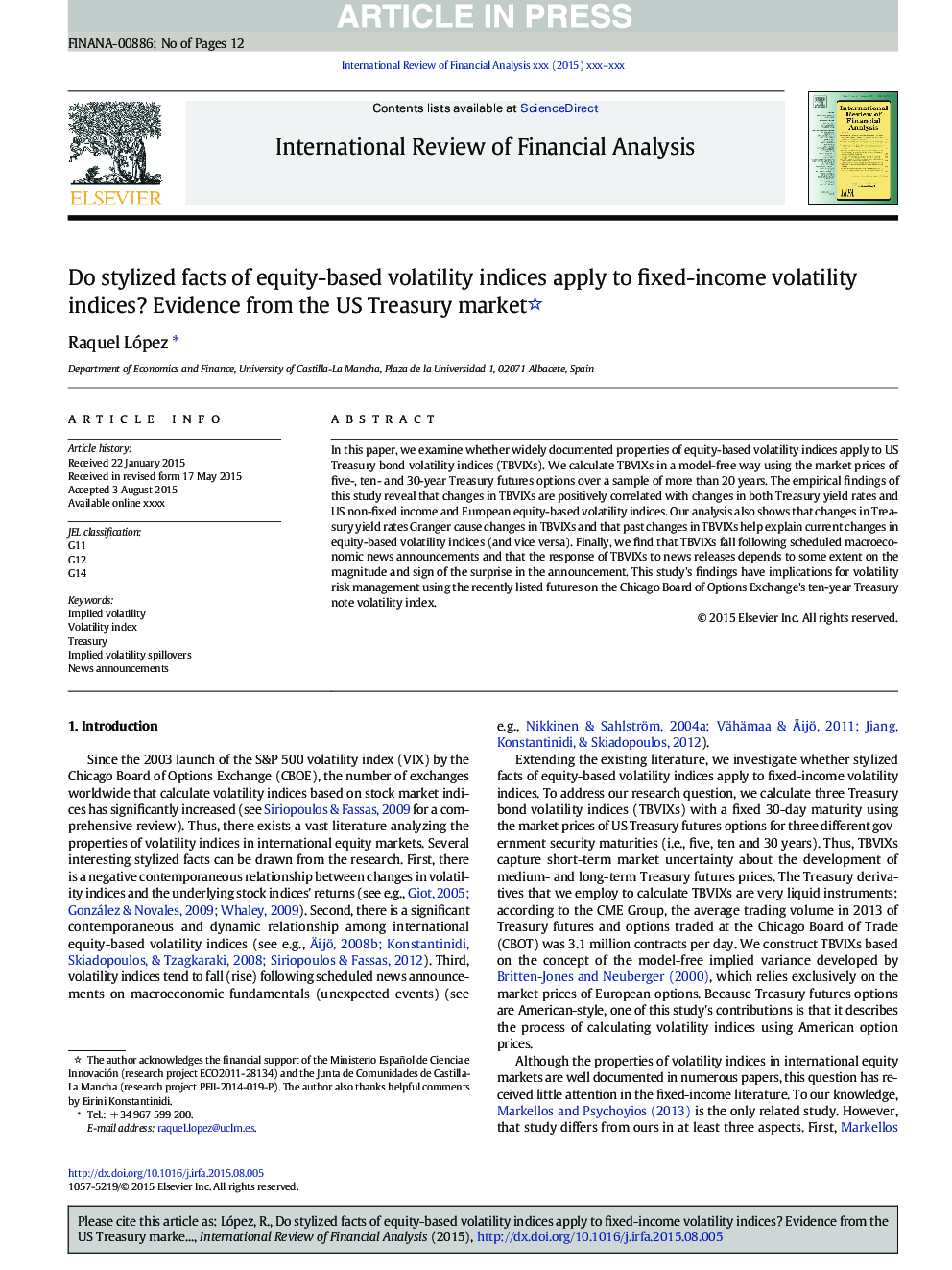| Article ID | Journal | Published Year | Pages | File Type |
|---|---|---|---|---|
| 5084717 | International Review of Financial Analysis | 2015 | 12 Pages |
Abstract
In this paper, we examine whether widely documented properties of equity-based volatility indices apply to US Treasury bond volatility indices (TBVIXs). We calculate TBVIXs in a model-free way using the market prices of five-, ten- and 30-year Treasury futures options over a sample of more than 20Â years. The empirical findings of this study reveal that changes in TBVIXs are positively correlated with changes in both Treasury yield rates and US non-fixed income and European equity-based volatility indices. Our analysis also shows that changes in Treasury yield rates Granger cause changes in TBVIXs and that past changes in TBVIXs help explain current changes in equity-based volatility indices (and vice versa). Finally, we find that TBVIXs fall following scheduled macroeconomic news announcements and that the response of TBVIXs to news releases depends to some extent on the magnitude and sign of the surprise in the announcement. This study's findings have implications for volatility risk management using the recently listed futures on the Chicago Board of Options Exchange's ten-year Treasury note volatility index.
Related Topics
Social Sciences and Humanities
Economics, Econometrics and Finance
Economics and Econometrics
Authors
Raquel López,
